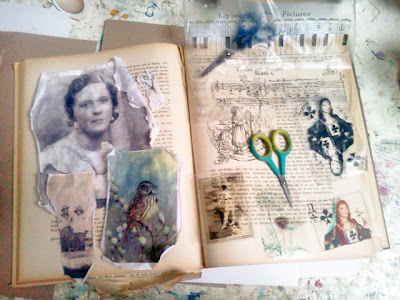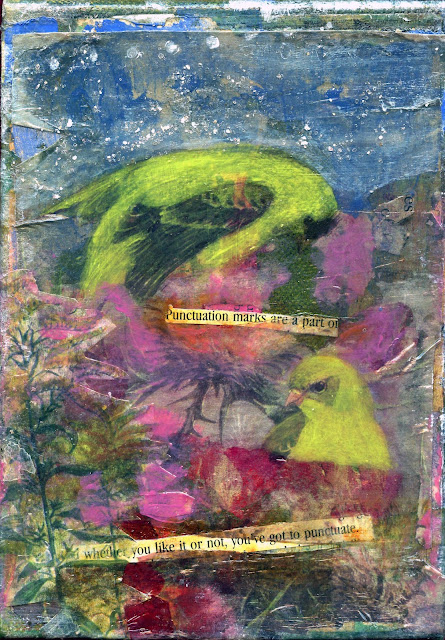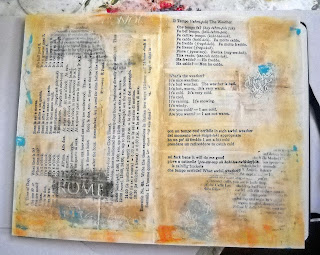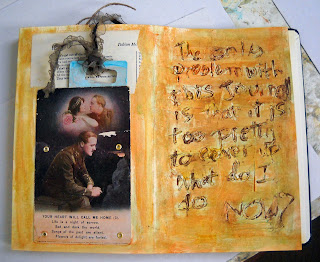I made this big print at the request of one of my daughters and her college roommates. They wanted to display it on a wall in their apartment. It works well there, actually. (Yes, I checked.) I like the image just fine big, which I knew I would, but, geez, I find so much to hem and haw about in the details. Or lack thereof. I think that this must be a Traditional Collage Thing. When viewed as a print, the details go all paunchy. The shadowlines go fugitive. Cuts that might nettle a viewer's response in real life (such as the breast scarification in this piece), look merely bland, like a good nose job in Los Angeles. The décollage? When viewing the original it's clear that some fool rubbed off her fingerprints getting that texture just so and if one is lucky, the viewer may just be drawn in enough to ask why. But you don't even see the décollage in a print. We won't even go into the color values....
My bottom line: A print of a traditionally made collage is like listening to My Morning Jacket in monaural format.
 |
| Tool Series: #1 Pink Cuff, paper collage with décollage on 6x8 canvas board, at left. Big-ass print on right. |
Notice that I deliberately have been inserting the descriptor "traditionally made" when I speak about my work. As usual, in these sorts of ruminative matters, there are tentacles that stretch out in many directions. Not everybody works "traditionally" anymore. In the collage community currently there is intriguing discussion on the parameters that define the medium of collage as we have known it. How much paper is enough paper? Should glue be measured by the pound? Is digital collage really "collage"? I read these discussions avidly, though I can't contribute much since I have only a primitive working relationship with digital media at the moment. But I can't help wondering if at some point the way you get there becomes less important than what you speak and what you spark.
In other words, if what you have to say happens to be best expressed through paper and glue and scissors and knives and even rubbing off your fingerprints in the spirit of décollage ... and what you create speaks to hearts enough to be requested for daily living with ... what the heck does it matter if the shadowlines look like they were made with thick Micron pens?
These are initial thoughts and I apologize for the lack of sophistication. Art is a journey. More to follow. Thanks for listening.









.jpg)







.jpg)






















.jpg)













